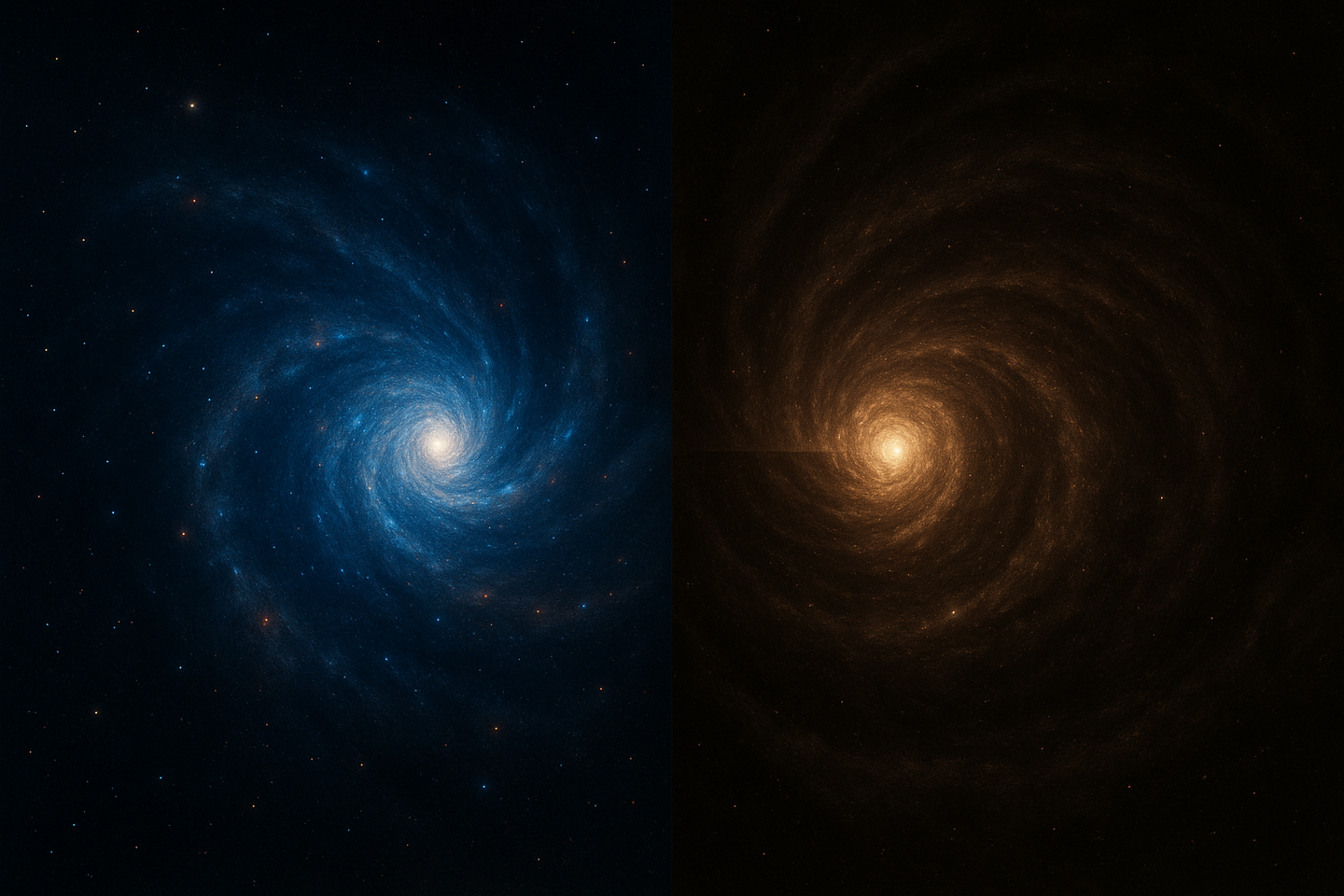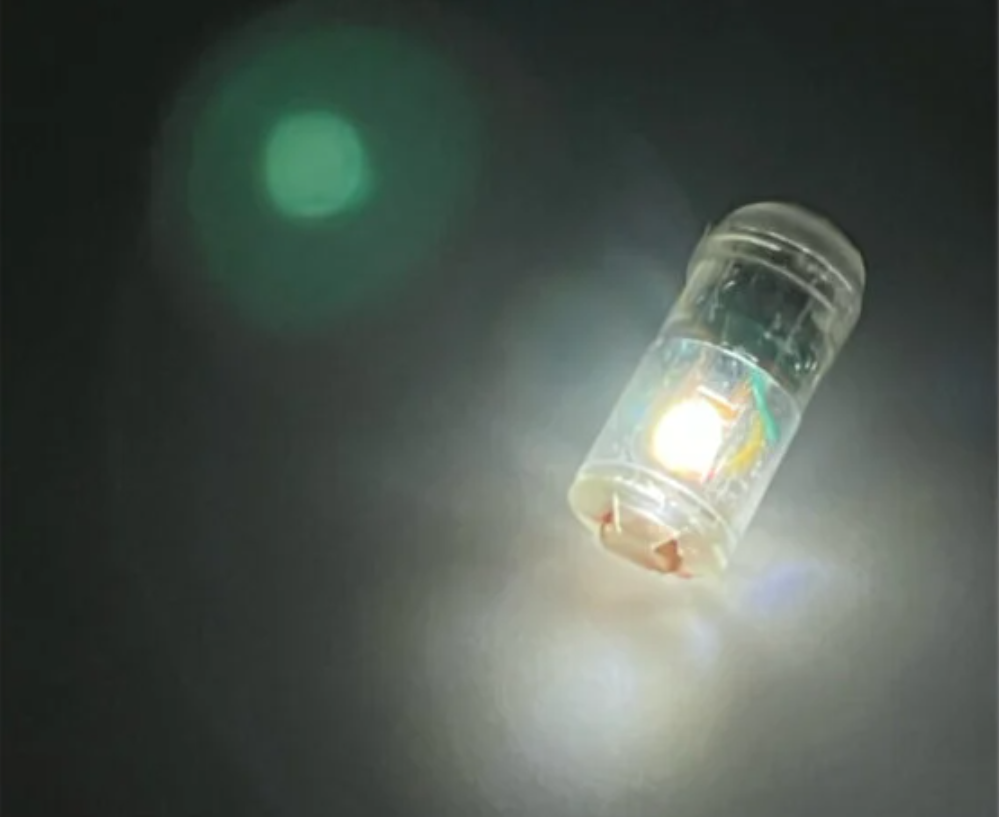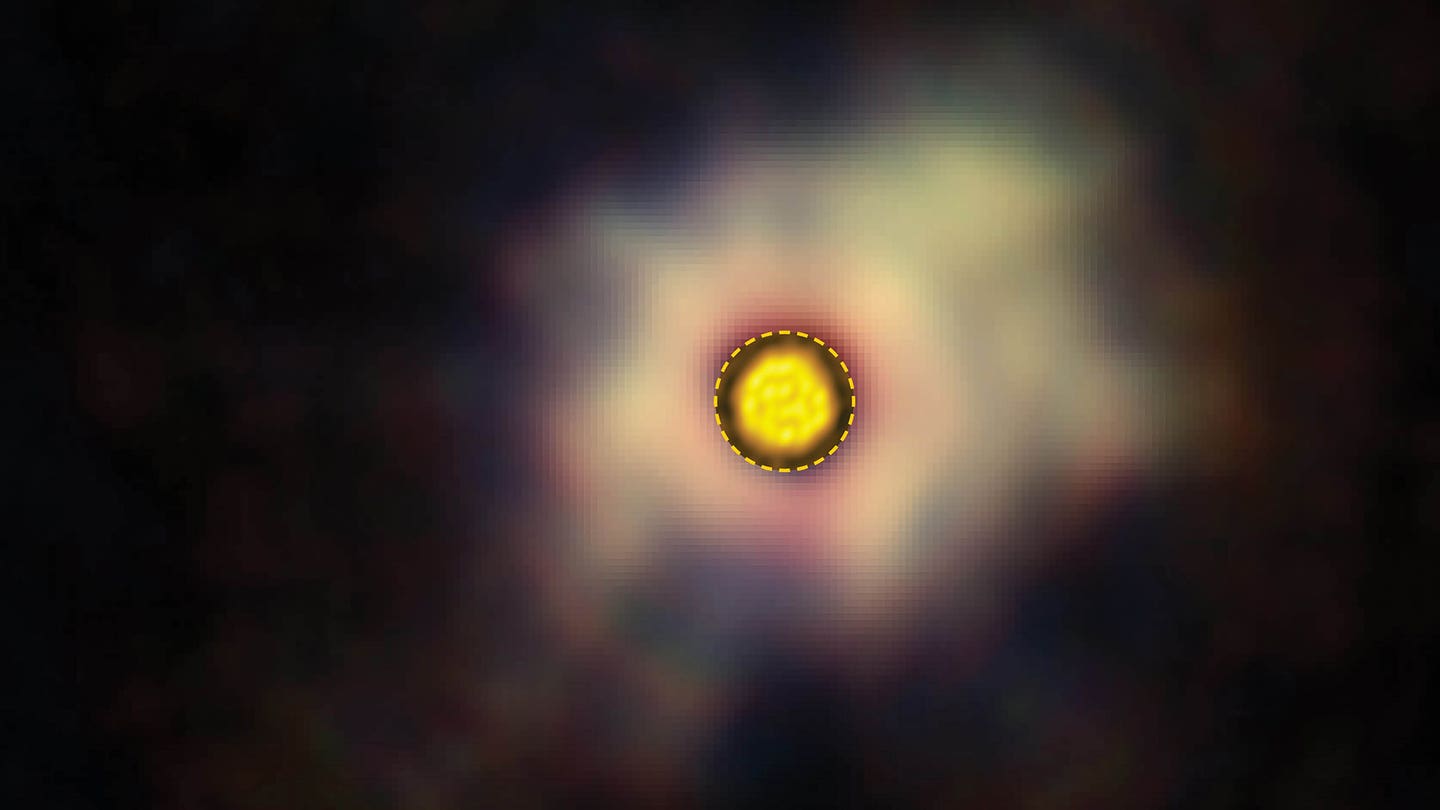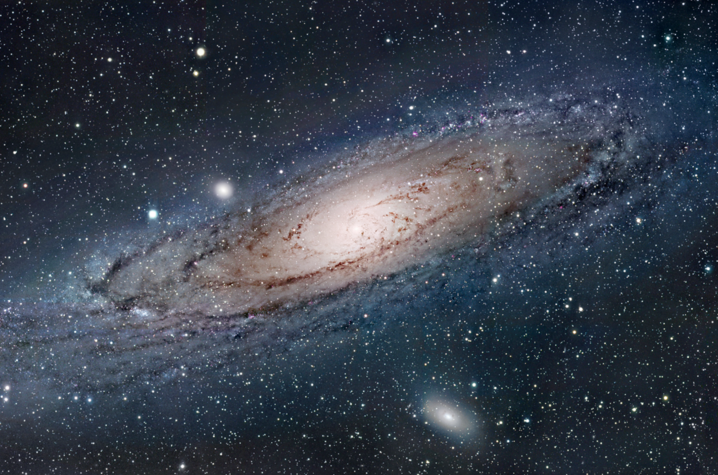Physicists propose the existence of a mirror universe where time runs in reverse
New CPT symmetry theory suggests our Universe has a mirror twin, solving dark matter and antimatter mysteries without exotic physics.

On one side is our Universe, expanding and moving forward in time as we experience it. On the other side is a mirror Universe that also expands, but in the opposite time direction from our point of view. (CREDIT: AI-Generated / The Brighter Side of News)
In the earliest moments after the Big Bang, the cosmos was remarkably simple. Space was flat, filled with intense radiation, and followed the well-known Friedmann–Robertson–Walker description used in cosmology. Tiny fluctuations in density were Gaussian and almost the same on every scale.
No sign of primordial gravitational waves or cosmic defects appeared. These observations have long supported the inflationary model—a theory that the Universe experienced an extremely rapid expansion before reaching its current state.
Yet inflation has its critics. Some physicists see it as an elegant story weighed down by unnecessary assumptions. Among them are Neil Turok and Latham Boyle, who believe there is a better explanation. Their proposal replaces inflation with a principle already central to physics: CPT symmetry. This principle states that the laws of physics remain unchanged if charge, spatial coordinates, and the direction of time are all reversed at once.
Beyond the Big Bang
Turok compares inflation to the ancient idea of Ptolemaic epicycles—complex add-ons meant to fix observational mismatches. Instead, he and Boyle extend the Universe beyond the Big Bang, which marks the point where Einstein’s equations break down.
Their picture describes a Universe paired with a mirror counterpart, an “anti-universe,” extending backwards in time from the Big Bang. In that realm, matter is replaced by antimatter, spatial directions are flipped, and time moves opposite to our experience.
“The most natural assumption is that the Universe as a whole respects CPT symmetry, encompassing not just our universe but an anti-universe as well,” Turok explains. From the perspective of a hypothetical observer there, time would feel normal, just as it does for us. From our viewpoint, however, their clock runs backward.
Related Stories
- Quantum breakthrough enables scientists to reverse the flow of time
- Quantum networks could unlock the secrets of time and gravity
This pairing changes how physicists think about the Big Bang. Rather than a beginning from nothing, the Big Bang becomes a boundary between two symmetric halves of a larger cosmic whole.
A Vacuum Full of Particles
In this framework, the Universe’s scale factor—the measure of how it expands—is directly tied to conformal time, which allows perfect time reversal. When the equations are extended beyond the Big Bang, they reveal a special kind of vacuum that preserves CPT symmetry.
This vacuum is not empty like the Minkowski vacuum of flat space. Instead, it contains a finite density of particles. One consequence is a new origin for dark matter, the invisible substance that makes up about 27% of the cosmos.
Instead of inventing exotic particles, the theory points to a familiar but elusive candidate: right-handed, or sterile, neutrinos. These particles do not interact through the electromagnetic or strong nuclear forces and are extraordinarily massive—about 500 million times heavier than a proton. In a CPT-symmetric universe, the creation of such neutrinos happens naturally.
Turok calls this “the most economical explanation for dark matter” because it fits neatly within the Standard Model of particle physics.
Clues from Antarctica and the Sky
Hints that these particles might exist come from unusual data collected by the Antarctic Impulsive Transient Antenna (ANITA). The balloon-borne experiment detected radio pulses from particles appearing to travel upward through the Earth, possibly with energies between 200 million and a billion giga-electronvolts.
Some scientists think such neutrinos would be perfectly stable in a CPT-symmetric universe. But Turok notes that small modifications could allow them to decay over billions of years—still long enough to persist since the Big Bang but short enough to occasionally produce signals like ANITA’s.
The theory also offers a different take on the cosmic microwave background (CMB), the afterglow of the Big Bang. In the inflationary model, small temperature variations in the CMB arise from quantum fluctuations during inflation. In the CPT-symmetric view, they come from quantum uncertainty near the Big Bang itself. This means the Universe and anti-universe are almost—but not perfectly—mirror images, leaving room for chance and variation.
Solving the Matter–Antimatter Puzzle
One of cosmology’s longest-standing mysteries is why our Universe has so much matter and almost no antimatter. If both were created in equal amounts during the Big Bang, they should have destroyed each other, leaving behind only radiation.
The CPT-symmetric model solves this by balancing the books across both universes. Our side contains the matter we see. The anti-universe contains an equal quantity of antimatter. Taken together, the total matter–antimatter content is perfectly balanced.
Simple Rules, Big Consequences
Modern physics often solves puzzles by proposing new particles or forces that no one has observed. The CPT approach avoids that, sticking closely to the Standard Model and the symmetry principle already confirmed in experiments.
This simplicity gives the model clear predictions:
- The lightest neutrino should have no mass at all.
- All neutrinos should be their own antiparticles (Majorana particles).
- The Universe should lack long-wavelength gravitational waves from the Big Bang.
If experiments confirm these predictions, it would strongly support the idea of a mirror universe. If not, the theory would face serious challenges.
Testing the Hypothesis
Future neutrino studies could be decisive. Detecting whether neutrinos are their own antiparticles is already a high priority in physics. Measuring their masses with greater precision could confirm or rule out the model’s assumptions.
Searches for gravitational waves from the Big Bang also offer a direct test. If such waves are found on the longest scales, it would be evidence against a perfectly CPT-symmetric cosmos.
High-energy cosmic-ray experiments, including follow-ups to ANITA, may also help. Observing the decay products of ultra-heavy neutrinos would be a striking signal in favor of the theory.
Extending Quantum Physics into the Cosmos
The CPT model does more than address dark matter and symmetry. It extends quantum field theory to curved spacetime in a way that respects the full symmetry of the Universe’s geometry. In this picture, the preferred vacuum is not an arbitrary choice but dictated by the symmetry itself.
Turok and his colleague Kieran Finn see the work as incomplete but promising. “Our findings suggest that the most likely universe is one very similar to our own,” Turok says. This matches statistical studies suggesting that symmetric universes are naturally favored.
Rethinking the Universe’s Story
If this model is correct, the Universe’s origin story changes. The Big Bang is no longer a unique beginning but a boundary between two intertwined realities. The cosmic balance of matter and antimatter spans both sides. Dark matter emerges naturally from particles already suggested by existing physics.
The elegance lies in its restraint. Instead of piling on speculative new elements, it uses a fundamental symmetry to explain multiple mysteries at once.
Still, caution is necessary. The inflationary model explains certain large-scale patterns in the Universe very well. Any competing theory must match or surpass that success. For now, CPT symmetry offers a fresh lens, not a final answer.
In the coming years, a combination of particle physics experiments, cosmic surveys, and high-energy astrophysics could reveal whether we truly have a mirror universe across the Big Bang—or whether the Universe’s earliest moments hold an even stranger secret.
Research findings are available online in the journal arXiv.
Note: Materials provided above by The Brighter Side of News. Content may be edited for style and length.
Like these kind of feel good stories? Get The Brighter Side of News' newsletter.



